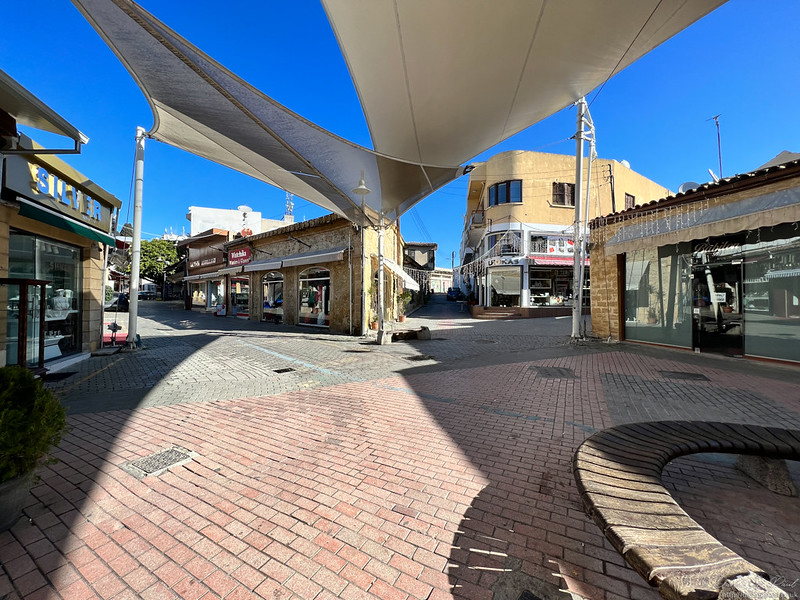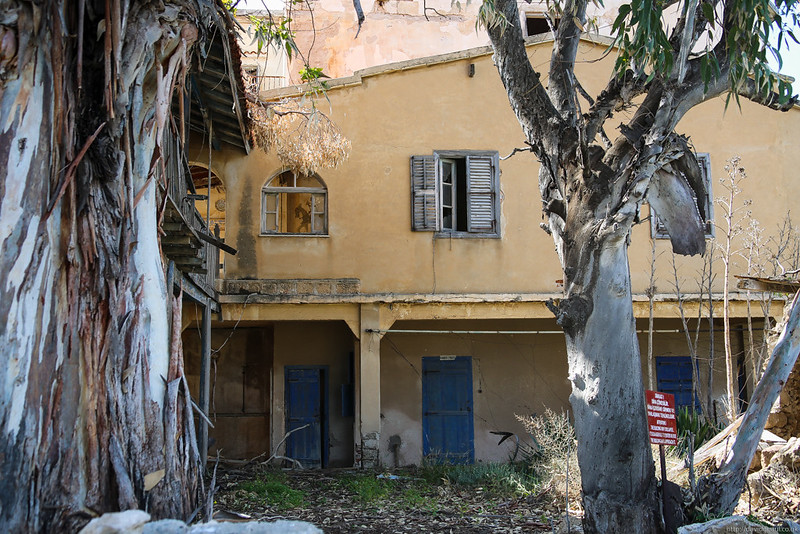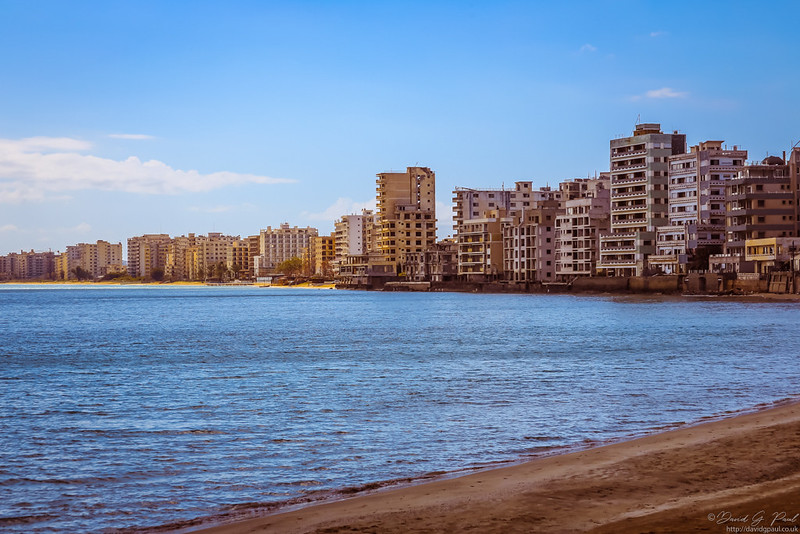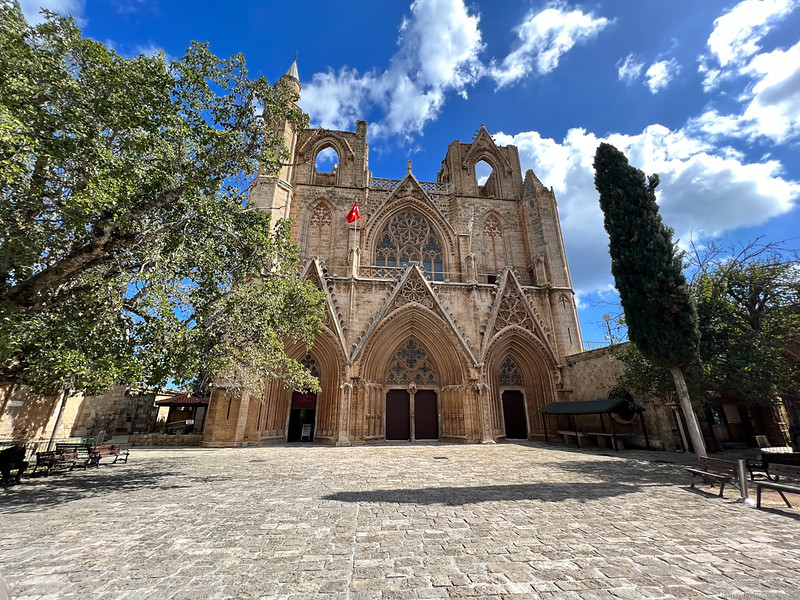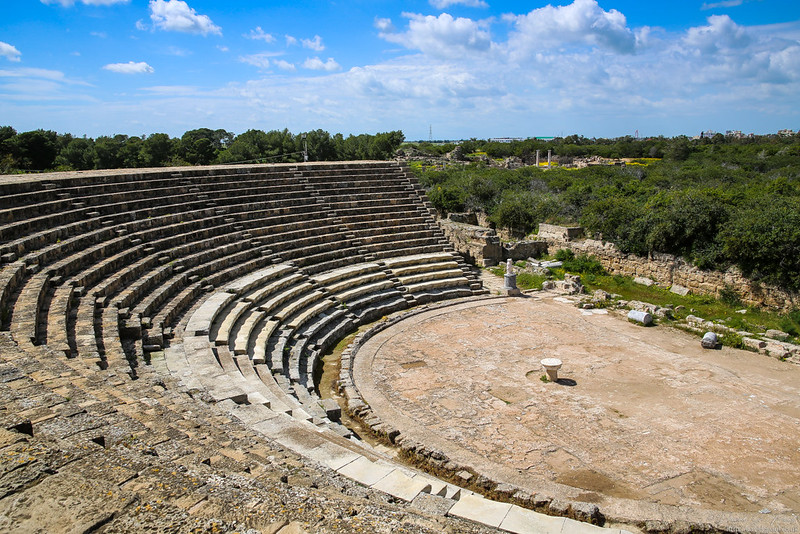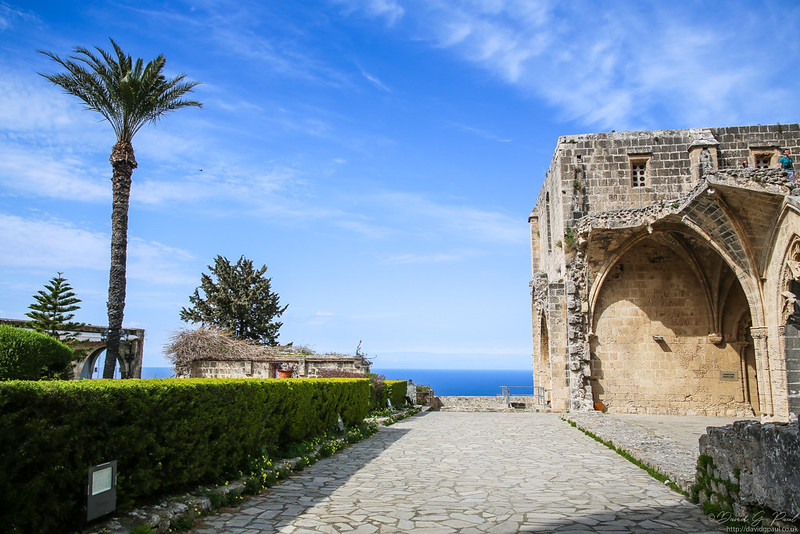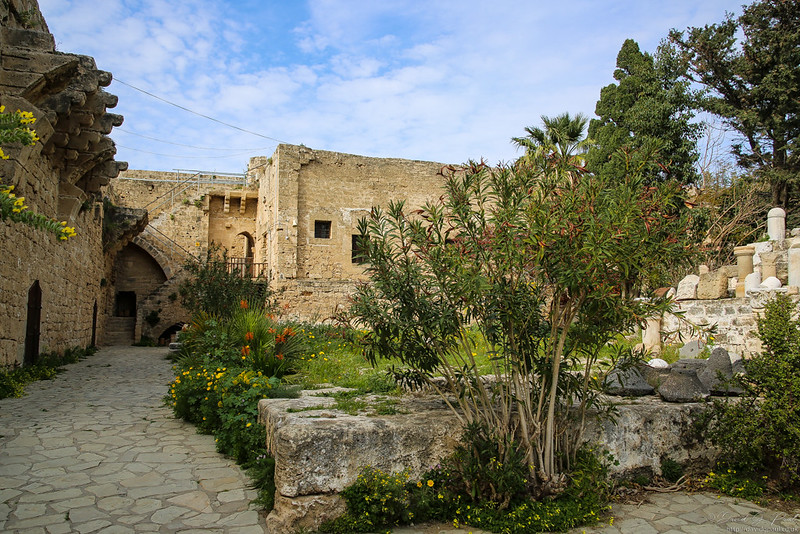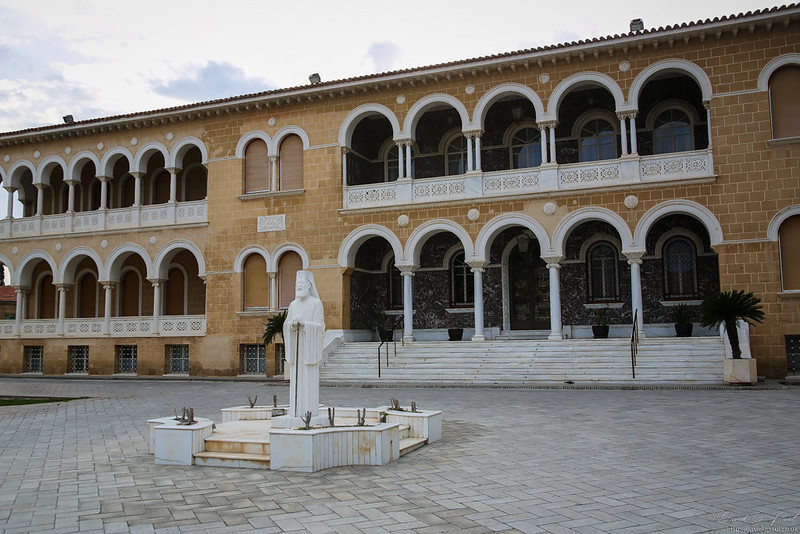Once a part of the Ottoman Empire, Cyprus was given to Great Britain in exchange for help against Russia. Almost one hundred years later the discontent was so rife that there was no choice but to rightly give them their independence. As I’d mentioned before during my first visit, the division between Greek and Turkish inhabitants, and the threat of the country being swallowed into Greece, led to an invasion that split the island in half. So far I knew mostly of the Greek side of the story, but there are usually at least two sides, plus the truth.
After missing my chance to cross the border into the Turkish-occupied Northern Cyprus during my first trip, this was now my chance to try again. First though, I started my day off with a short run to the Municipal Park to see the statue of Yuri Gagarin. This was not the most direct route though due to being unsure about the location of the UN border. Once I’d seen that I then ran back to the apartment to get ready for the day ahead, passing soldiers being briefed by the border crossing.
The Ledra Street checkpoint was a very short walk away from where I was staying, and the crossing time wasn’t as bad as I expected it to be. I’d been contacted a week ago by the tour company, to let me know that due to winter opening times they wouldn’t be able to fit in the Bellapais Monastery that this tour usually includes. Why they couldn’t have told me this months ago I don’t know, but it didn’t really matter.
I was on the other side of the border half an hour earlier than I needed to be so I did have a short wander around, and wasn’t completely sure how I’d know where the guide would find me, or how I’d know it was them. When the scheduled time arrived I messaged the organiser to find out, but within minutes a guide appeared and confirmed it was me they were here to collect.
The guide then drove me to Famagusta, and for the entire journey he told me about approximately ten thousands years of Cypriot history with the main focus being on the change of ownership at various times. This was the second largest of the cities in the north, and one particular area was of interest for this - the beachside area of Varosha.
The whole area had been closed off for decades since the invasion of 1974, with over 39,000 people losing their homes and businesses, and now a ghost town that after 49 years have seen nature slowly take hold in places, and buildings now crumbling into a dilapidated state. For all this time the Turkish military had kept people out, declaring it a forbidden zone, although it’s known that people have occasionally snuck in. In 2021 it was controversially reopened to tourists, and from appearances it seemed they’d fixed the pavements and roads.
The entrance to Varosha is through a checkpoint and immediately you can see a small store, and an array of bicycles so you can travel around the area quickly. Presumably they’re rented at a cost, but me and the guide started walking along the empty streets, and past abandoned buildings until we reached the coast where we could see into the closed beach resorts. He told me how one of these houses had been owned by his partner, but now couldn’t go in. How true this was, I couldn’t say, but no doubt there’d be others in their Turkish Republic of North Cyprus with similar stories.
On the way back to the car he pointed out one building that had a Don Quixote mural. I’d have liked to have explored some more, but I knew time was limited. If I’d been on my own I suspect I’d have rented a bike and got around as much as I could in a similar timeframe. However, it was now time to see a few sights elsewhere in Famagusta. We parked up outside the 14th-century Gothic Cathedral of St. Nicholas which was repurposed as a mosque and renamed Lala Mustafa Pasha. This is just one of a number of old churches I could see in the area, but this one we went inside, removing my shoes. The main difference between this and other churches is the lack of pews, and that the floor is now carpeted.
Rather than seeing inside any of the others, I was then told I could spend ten minutes on the city wall,. It’s only a small section, and from the top you can see into the modern harbour, and behind to the churches and a few other ruins. I think this part of the city has quite a bit of character.
The guide then drove me to Salamis, a former capital from a few thousand years ago. No longer the home to 150,000 people as it once had been; the only sign of its history of Assyrians, Egyptians, Persians, and Romans was now the ruins we were there to see. He pointed out that the first room would have been a swimming pool, and the statues of gods around it replicas. Each one had its head removed when Christianity arrived here as to them could only be one god. To one side there were smaller pools, and the other a gymnasium. This also provided access to the communal lavatory which would once have seated dozens of people. Now, there were only three posts left, but the marble seats they’d have once had were long gone.
The final part of the ruins I got to see was the amphitheatre where he explained how the size of a population could be calculated from the number of seats here. He then left me to look around whilst he went to get a coffee, but I figured I didn’t need much time really. I soon headed over to meet him, and he began the drive on to Kyrenia, and through to Bellapais.
This small village has narrow winding roads, and was once home to author Lawrence Durrell, the novelist brother of naturalist Gerald Durrell. Whilst there it inspired Durrell to write his book “Bitter Lemons” about his three years on the island. It’s a popular book in Cyprus and can be found in most of their bookshops. One of the topics it covers is the ‘Enosis’ - the proposed unification with Greece, and the violence that this resulted in.
Before looking around anywhere, we stopped at a restaurant for food. There was two options choose from: cheese, or chicken. I had the chicken salad. There was more to it than I could eat even though it was later than I would normally eat. I figured as the week went on I’d probably adjust to bigger meals and the lesser frequency of them like I normally do.
We then walked around the monastery, some of which had by damaged by an earthquake. Their hope is this 13th century building may soon get some restoration work done. It’s still in relatively good condition though, and in its mountain location it has a good view of the sea. After the tour company’s earlier communication I’d not expected to see this.
When we returned to Kyrenia, it was the castle we were there for. This once had a water filled moat but the British filled it in, and now it’s a road to the harbour. The castle itself was built in the 7th century by the Byzantine empire as a form of protection against Arab raids. At this point a chapel was outside the walls, but as we could see, the later Venetian expansion brought it inside.
There is a large open courtyard inside and the only parts were could see was the dungeon and the shipwreck museum. I’d have been happy to have skipped the long stories here so I could have seen rest of it. Instead we were told the King’s mistress who had been imprisoned here after giving birth, and of the 2,300 year old shipwreck we could see.
This then began the long drive back to Leftkosa. We drove past the Kyrenia Gate, and then parked up not far from the border crossing. He pointed out where the crossing point was, and to me to Büyük Han (The Great Inn) where the tour ended.
The old inn is an old trading one which is one of only two left like this in the country. After the division of Nicosia, some who fled their homes had stayed here for a time, but now it was a bustling marketplace with a restaurant.
As the tour had not included Selimiye Mosque, which it had meant to, I went looking it. As it was once the Cathedral of Saint Sophia it sound have been easy to find. It was, but it was completely hidden by scaffolding and was closed off completely. Instead, I wandered around a bazaar and finally crossed back into the Greek part of the country.
It was over an hour until sunset so I decided to take this opportunity to photograph the Archbishop’s palace, and then the Famagusta Gate. I’d seen everything I could for today now so headed across the city to the bus stop I’d need for tomorrow. Having some familiarity now of the area I found my way easy enough, and confirmed what times it would be available.
Not wanting to go back to hotel to then go back out for food in an hour, I had dinner around 18:00 on my way back. It’d cooled off considerably since sunset so it was nice to have something hot anyway. When I back to the hotel it was quiet for the most part, but with no real plans of anything to do I fell asleep by 20:00, and woke up for an hour after ninety minutes. It was nice have some proper rest now though.

